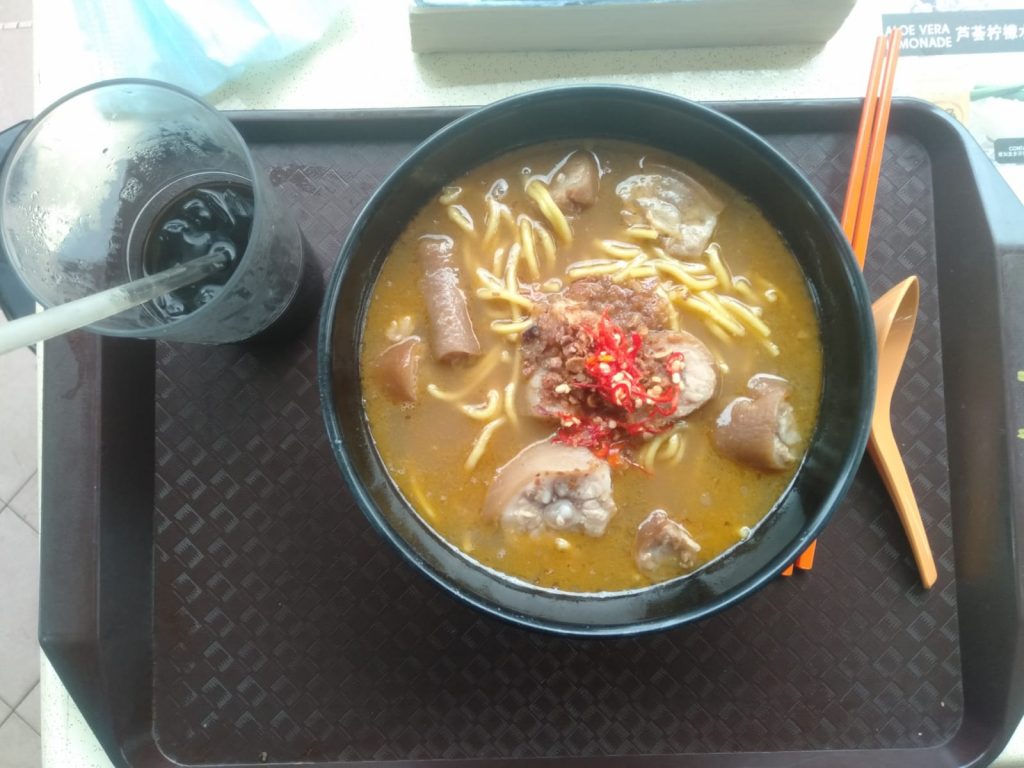There are some principles of existence that can be found in almost all religious texts, and most of the time they are too simple to really be taken into consideration in everyday life. One of them says that what is up will go down and what is down will one day rise. All three Abrahamic religions, Buddhism, Hinduism, ancient mythology or popular traditions converge, one way or the other, to this simple idea that may be interpreted as a necessity to understand the surrounding world as a system where abrupt changes are set to occur and influence the essential fabric of the human being, who is also part of the natural world. Among countless restrictions that differentiate religious groups, food taboos are tremendously important, as they define the sacred as opposed to the defiled by means of choices made between available foodstuffs. Working with culinary arts students through the symbolism of food items in different cultures is quite eye-opening for all parties involved, especially when a course on food history allows the nostalgic descriptions of traditional cooking techniques, the rigour of the social sciences and the captivating narratives of ancient chronicles to find a common ground. As far as modern day cuisine, restrictions on what and how to consume food are still in place, and future chefs were necessarily aware of all of them. There is no way a dish such as pig’s tail soup would ever find its way on a five star restaurant plate, they said. Nibbling bones is far from gracious, not to mention the rear-end association of such an unusual meat cut.
The days when domestic animals were sacrificed in traditional ways are gone. With the exception of some students who witnessed religious practices that are still allowed, nobody had even tried to sacrifice a chicken, not to mention larger animals. One article we were discussing in class once was talking about the Christian practice of sacrificing a pig before Christmas in Greece, and the anthropologist herself was very emotional about the topic. But it happened that during an immersion trip to Thailand we witnessed the entire process of preparing pork meat immediately after the slaughter. After a few moments of amazement, revolt and even disgust, the instinct of future chefs was activated and most of them took part in the portioning process. They were there to learn and, as they were used to working long hours, the magic surroundings of the jungle at dusk and the fieldtrip atmosphere around a fire well into the night added the necessary incentives to recall a descriptive text we had just finished reading a few days before. Partially informed by an anthropological fieldwork account on the traditional way of slaughtering a pig in Greece, even the most insignificant details of the same process in Northern Thailand became tremendously important for understanding what was usable in haute cuisine once the students were back to their neat culinary arts laboratories from Singapore. And none of us could have brought anything back had we not dug into our own personal history backpack. Unfortunately, the pig’s tail never made it to the list for the future chefs. But that was not applicable to me, as the stories themselves interested me more than the end products and their competitiveness in the cut-throat environment of high-tier restaurants.
The summits of the hills surrounding my grandparents’ village are covered in thin stripes of woods, last remnants of the mythical forests that now are to be found only in literature. Yet these continuous lines of hilltop wilderness are sometimes inaccessible because of thick bushes of raspberry, ferns or other plants that take advantage of the available sunlight there, where shadows end and the pastures or plowed fields begin. There were always hidden gaps in those fortress walls and my favourite playground as a child was the cathedral-like stillness of the hilltop woods. The wild boar sanctuary was, for me, located in a place called “The Bee”, an unusual sandy hillock for that altitude that had its own legend: a long time ago, a lady who had started building a house with her husband by bringing sand and stones in her apron from a river bed a mile away was left alone when he was called to serve in the army. As years passed, he never came back and the sand pile became a hill under which was a pot filled with gold coins that Bee’s husband had placed for safekeeping when he had left. As people found out about the treasure and were threatening to take it away, the now old lady who had been working like a bee her entire life for a dream never to be fulfilled laid a curse on the place: whoever wanted to look for that treasure was fated to encounter a passel of wild boars (in other accounts, a harass of white horses) that would come out of nowhere, red-eyed and furious, in a frightening and eventually lethal stampede. As most local stories, this one had a grain of truth, as the place was scheduled as a tumulus by local historians, and it was in reality an ancient migratory people burial mound like thousands of others that can still be seen from Mongolia to Ireland. But as long as the digging was done by the animals themselves, there was no worry in the world for us, children. Alone or with my friends we would look for treasures in the trenches made by wild boars, always eager to meet the real beasts. Of course, they were smarter than us and their presence was at most felt as a dissatisfied growl in the distance. Back in Singapore, some students had much more to say on the subject: wild boars lived in the jungle that covers some patches of the island in the north and many had seen them while taking a walk in the parks there. Some saw them as cute, others as dirty or frightening, but none of them thought of them as members of the same Sus scrofa species as the ones that provided fresh supermarket ingredients.
For me, the ghostly presences from my hilltop woods were the cousins of the animals that in the 1980s were present in every backyard. The pig was my favorite pet friend. Unpredictable, with strong personality and even putting up attitude if I was feeding him later than usual, he would run with me, play hide-and-seek, knock me down and very rarely allow me to ride for a few seconds in a sort of funny mini-rodeo. But as Christmas was getting closer, I could notice that the pig was gradually becoming aware of the fact that his one-year life cycle was nearing its end. That was heart-breaking. For me, a holiday peasant residing in a city most of the time, the otherwise healthy and rich countryside diet came with a footnote: occasionally I had to consume those beings that once were my playmates and best friends in the backyard, no fuss or complaints allowed. Back then, becoming a vegetarian, or even a vegan, did not come as an act of rebellion because, in the Christian Orthodox tradition, it just meant that you were continuously fasting, which was seen as good for you. But much earlier than reading about the Hindu saying “You are your own food”, I chose to think of the consumption of my best friends not as some form of cannibalism, but merely as a communion with the environment I was living in and in which I found myself reflected completely. That was the childhood age when I was thinking that the world was me and I was the world. And food was a major component of the world, whether I liked it or not. And it was about that time that two foodstuffs that were never combined in a dish became, out of the blue, closely associated in my mind, maybe because of the legendary wild boar sanctuary on the hill constructed by the Bee: honey and pork. Although the combination was not customary in Eastern European cooking, I was to experience it for the first time years later, while I was living in Macau, China. And it was by far from distasteful. Looking up the Cantonese cuisine, char siew proved to be a signature dish which consisted of roasted pork marinated in soy sauce, sesame oil, garlic, ginger, a bouquet of other five spices and honey. The combination was addictive enough to trigger a positive response from a neuronal receptor that had laid dormant for all my life, but which proved that the dish was customary to generations before me. And that was not because my grand-grand parents lived in Southern China, but because the dish had been present on European plates long before the earliest recorded recipes were ever written down.
In the early years of the first century AD, Apicius was offering a range of honey and pork recipes that varied from Assaturam simplicem or the Simple Roast and ended with Offellae aprugneo or Pork Cutlet Hunter Style, a much more elaborate dish. There is no direct connection between the Cantonese char siew dish, which literally means ‘cooked on a fork’ or, in other words, common roast, and the Roman delicacies. In between, the Middle East was famous for its disregard for pig as a filthy animal, especially for the Jewish and Islamic traditions. Pork does not appear in the Mesopotamian recipes, although archaeologic research proves that pork was consumed there in significant amounts. It looks like common people did not have the luxury of employing scribes, there as well as now. It just wasn’t haute cuisine enough to be included in the chronicles of Assurnasirpal of Assyria, for example. Almost always officially marginal, pork meat combined with honey has found its own niche haute cuisine place among the sophisticated Cantonese and Roman cooking customs. This was confirmed by some of my Singaporean students for whom the char siew and other honey marinated pork dishes were comfort foods that they associated with good memories of their traditions, closest friends and happy family times. I discovered such a dish in a small hawker center in the Potong Pasir, a quintessentially Singaporean area. Although internet recipes of the Pigs’ tail soup do not mention the marinade, one of the secrets of exceptionally good taste is the pre-roasting of pork in a honey-based marinade. Added to a soup, sometimes combined with shrimp or other porkies, the pig’s tail is finished with egg noodles and, to me, it triggered the memory of a winter day, complete with a few centimeters of snow that could be seen from a hot and steamy large kitchen where everybody was busy preparing my recently sacrificed friend. The first parts to be cooked were the ears and the tail, and it was the children’s privilege to choose. As my complex decision-making algorithm back than, and even now, was represented by the mystical act of flipping a coin, I always had to bow down to destiny: tails. Always tails.
Tudor Vlădescu is our correspondent in Singapore since January 15th, 2020.










